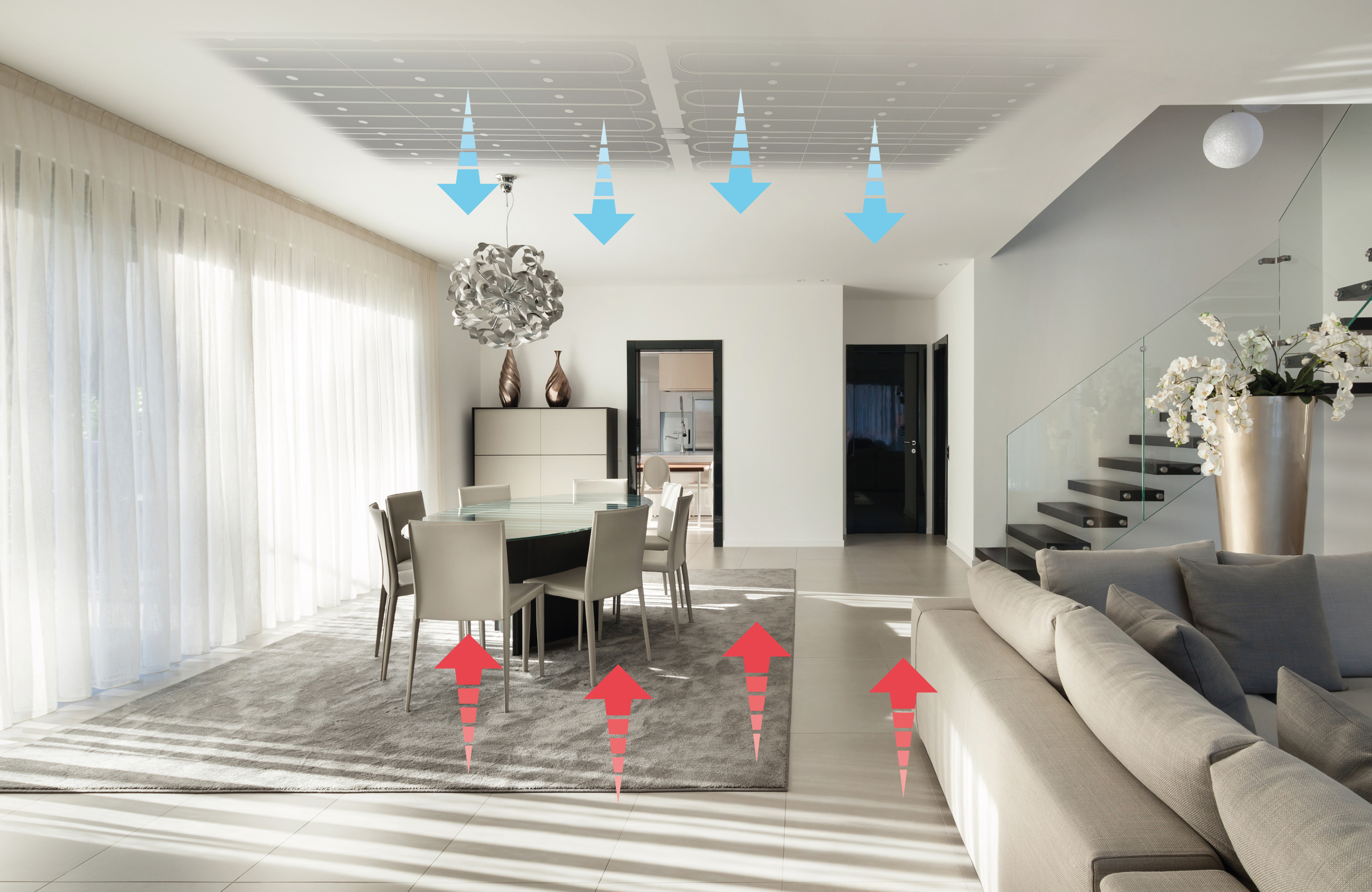
With thermostats now clicking into gear in homes across the country, most of us will be heading to the nearest wall-mounted radiator to warm our hands. But how about installing a heating system which makes the whole indoor environment more comfortable? Sheldon Cooper of climate control specialist WMS, explains why radiant heating should be on your specification list.
“When you’re asked to design a building or specify the most suitable climate control system, your considerations are likely to be around customer wants, spatial requirements, compliance with building regulations, cost, supplier relationships or the availability of installation personnel. Drilling down into how a heating or cooling system might actually operate within a room, other than basic temperature control for the user, probably seems less important. But if we understand a little about how ‘standard spec’ heating and cooling systems work, we could make a significant, positive difference to user comfort, project delivery and help the environment.
“Climate control systems achieve a desired temperature for a room through either the convection or radiation of heat. We commonly know convection heating to be radiators – or storage heaters. They work by heating the air around them to warm up a space and people in it. Electric panel heaters and open fires distribute heat in the same way and while this method of heating conjures up images of cosy living rooms on a cold winter’s day, it’s not actually an effective way of distributing heat and more often than not, cold spots are found.
“Radiant heat transfer on the other hand is far more effective. It’s how the sun warms up the earth. By using radiant heating and cooling systems – like underfloor heating, or cooling ceiling panels which I’ll explain more about in a moment, we can achieve a far more comfortable, energy-efficient and healthy indoor environment. What’s more, the systems are easy to install, require less maintenance than their convection system alternatives and will last much longer.
“Looking at underfloor heating first of all, this works by circulating warm water through a series of continuous loops which are fitted under a floor, creating a large radiant surface which heats a room from the floor upwards. And because underfloor heating covers a greater surface area than radiators, it can run at lower temperatures – 45oC rather than 80oC. The demand it places on energy sources is therefore significantly less, making underfloor heating the ideal system for use with heat pumps and solar panels – particularly relevant with the 2025 gas boiler ban on the horizon.
“Radiant climate control can also be achieved by installing ceiling panel systems containing cold water pipes. The warmth from objects in a room is pulled towards the relative cool of the ceiling, heat then transfers through the plasterboard by conduction, the water in the pipes is warmed, fed into a heat pump, and then channelled back around the ceiling until the desired temperature is reached. Radiant systems also provide humidity control, don’t release harmful greenhouse gases, are incredibly energy efficient and better for our health and wellbeing than traditional convection systems.
“Convection heating has been the ‘norm’ for some time and it has seen us move away from the cold, damp homes of the past, but the future should be about changing our way of thinking again. We should be looking for better, healthier ways to build our homes, schools and places of work – and for me, radiant heating is an obvious alternative.”
